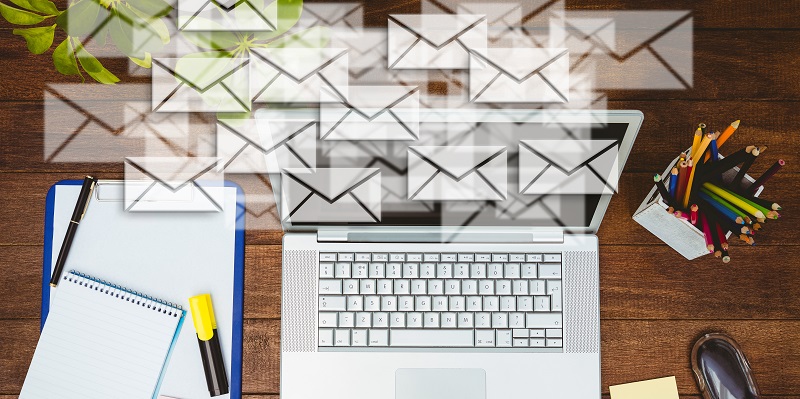Email marketing automation has revolutionized the way businesses engage with their audiences. By leveraging software to automate targeted messaging based on specific triggers and actions, companies can create a more personalized and engaging experience for their subscribers. In this comprehensive guide, we will explore the benefits of email marketing automation and provide you with strategies to maximize its potential.
How Personalization Leads to Higher Engagement and Conversions
Personalizing your email campaigns allows you to tailor content to individual subscribers, making them feel valued and understood. This personal touch improves open rates, click-through rates, and ultimately, conversions. By segmenting your audience based on demographics, behaviors, or preferences, you can deliver highly relevant content that resonates.
Crafting Compelling Subject Lines to Grab Attention
Subject lines play a vital role in grabbing the attention of your subscribers. Craft attention-grabbing subject lines that spark curiosity, create a sense of urgency, or offer a solution to their pain points. Experiment with personalization tokens to add that extra touch, making your emails stand out in crowded inboxes.
Challenges With Spam Filters and the Role of Mailchimp
While email automation can be a powerful tool, it is essential to understand the challenges posed by spam filters. Mailchimp, a popular email marketing platform, provides tools to help ensure your emails reach the inbox. Familiarize yourself with Mailchimp’s spam filters and guidelines to avoid your messages being flagged as spam.
Tips for Avoiding Spam-trigger Words and Maintaining Deliverability
Certain words and phrases can trigger spam filters, causing your emails to be diverted to the Junk folder or blocked altogether. To maintain deliverability, avoid using words like “free,” “guarantee,” or excessive use of exclamation marks. Regularly test your emails using spam testing tools to identify potential issues and rectify them before sending.
Maintaining a Clean Subscriber List
An engaged subscriber list is crucial for email marketing success. Regularly removing inactive subscribers helps improve overall engagement rates. Set specific criteria for defining inactivity, such as a lack of opens or clicks in a specified period. Purging your list of inactive subscribers ensures that you are targeting an audience genuinely interested in your content.
Strategies for Keeping your Subscriber list up-to-date and Engaged
To maintain an active subscriber base, employ strategies like re-engagement campaigns. Target inactive subscribers with exclusive offers or personalized content to reignite their interest. Encourage subscribers to update their preferences periodically, ensuring that you deliver content that aligns with their current interests.
Leveraging Automation for Success
Automation enables you to go beyond generic email blasts by delivering personalized product recommendations based on customer preferences and purchase history. Leverage data to create targeted emails that showcase products or services your customers are likely to be interested in, significantly increasing the likelihood of conversions.
Automating the Process of Requesting Product Reviews from Customers
Gathering customer reviews is essential for building credibility and trust. Automate the process of requesting reviews from customers post-purchase, making it seamless and hassle-free. Set up automated emails to be triggered a few days after delivery, encouraging customers to share their experiences and leave reviews on your website or relevant review platforms.
Utilizing Email Automation for Content Sharing
Sharing valuable and relevant content is a fantastic way to nurture your subscriber relationships. Leveraging automation to provide subscribers with blog posts, articles, case studies, or industry reports that align with their interests. By sharing valuable content, you position yourself as a thought leader and foster trust with your audience.
Automation Tools for Content Sharing
Use email automation tools to streamline the process of scheduling, creating, and sharing content with your subscribers. These tools allow you to automate content curation by integrating with content management systems or RSS feeds, ensuring your subscribers receive the latest and most relevant content.
Integration with Other Marketing Technologies Like CRM Systems
Integrating email marketing automation with customer relationship management (CRM) systems enhances your ability to deliver personalized and targeted messaging. By synchronizing customer data between your email automation platform and CRM, you can leverage detailed customer profiles to create highly targeted campaigns that drive engagement and conversions.
Seamless Integration with E-commerce Platforms
The future of email marketing automation lies in its seamless integration with e-commerce platforms. This integration allows you to leverage customer behavior and purchase history to create personalized recommendations, abandoned cart reminders, and customer feedback loops. Providing a tailored experience throughout the customer journey leads to increased customer loyalty and repeat purchases.
In a digital world flooded with content, email marketing automation has emerged as a powerful tool to engage and convert subscribers. By personalizing content, navigating spam filters, maintaining a clean subscriber list, leveraging automation for targeted messaging, and sharing valuable content, businesses can achieve higher open rates, click-through rates, and conversions. As email marketing automation evolves, its seamless integration with CRM systems and e-commerce platforms will continue to shape the future of digital marketing. Embrace the power of automation to unlock the full potential of your email marketing campaigns.

